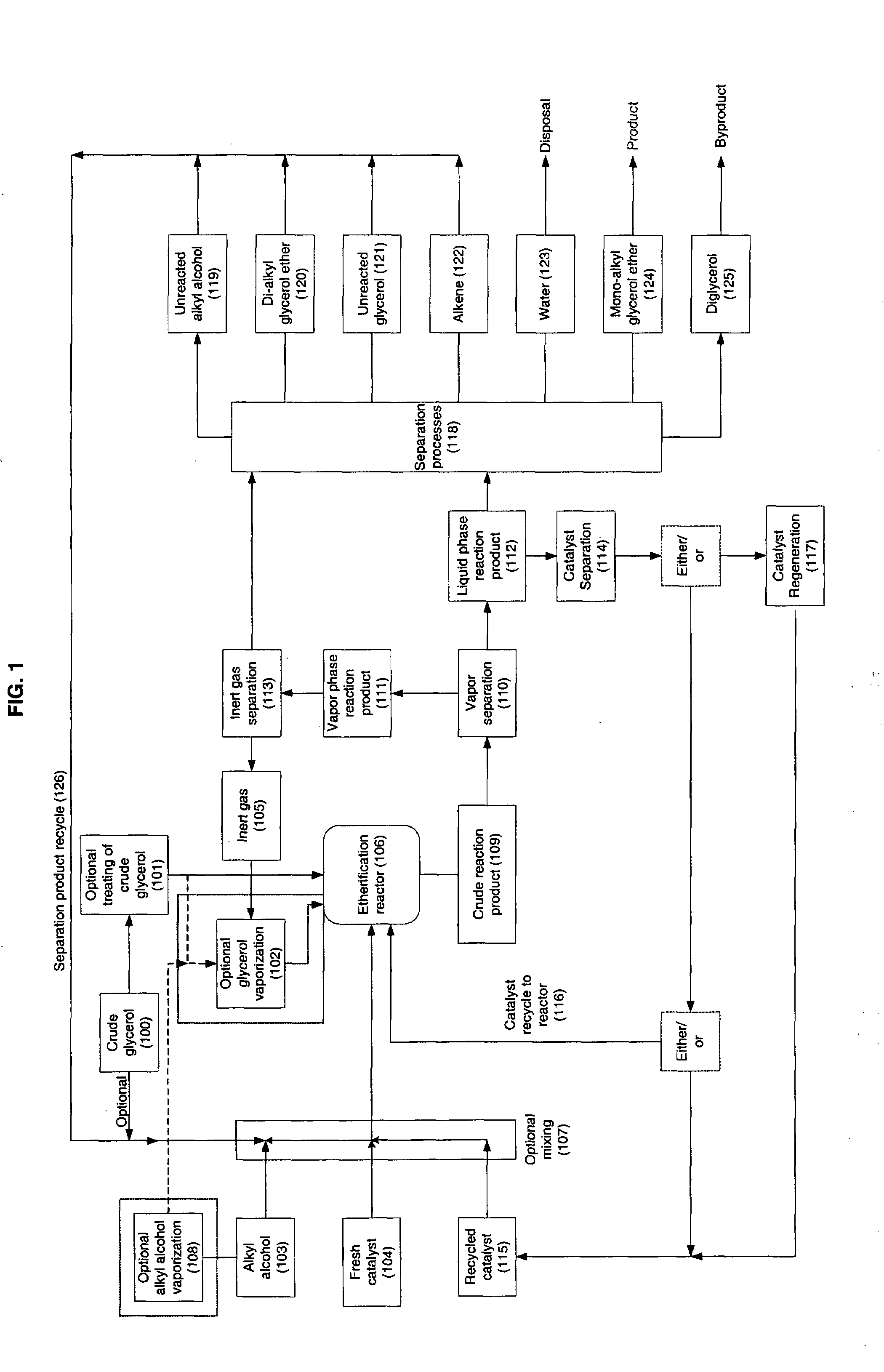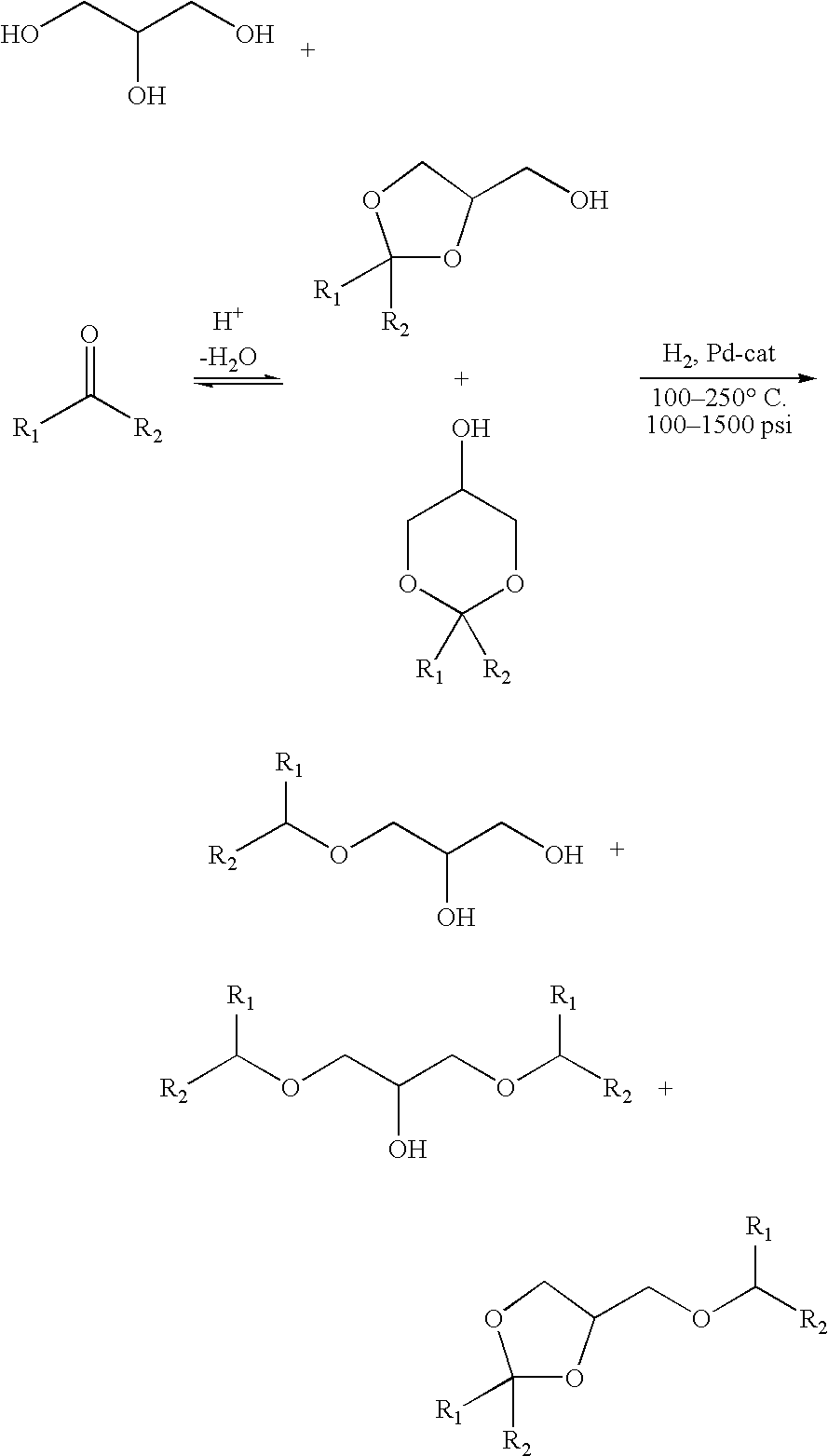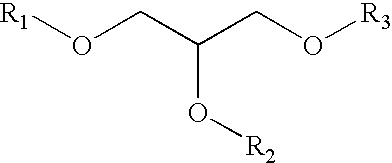Processes for converting glycerol to glycerol ethers
a technology of glycerol and ether, which is applied in the field of converting glycerol to glycerol ether, can solve the problems of large quantities of undesired waste and higher organochloride byproducts, large quantities of undesired salts and waste, and toxic and difficult to handl
- Summary
- Abstract
- Description
- Claims
- Application Information
AI Technical Summary
Problems solved by technology
Method used
Image
Examples
example 1
[0046]About 140 grams of 2-propanol is added to a 500 ml Parr® (Parr Instrument Company, USA, IL) model 4843 pressure etherification reactor along with about 215 grams of glycerol and about 46.7 grams of Amberyst 35W™ (Rohm & Haas, USA, PA) catalyst. The top is placed on the etherification reactor and bolted down. Extending into the etherification reactor from the top is an agitator shaft with turbine blades attached at two places, at the bottom of the shaft and half-way up the shaft. Also extending into the etherification reactor from the top are a liquid sampling line with a sintered metal filter at the end of the sampling line, a thermocouple, and a vapor space vent line. The reaction components in the reactor are heated to a temperature of about 150° C. and a pressure of between about 270 psi to 320 psi for about 6 hours with an agitator speed of about 425 rpm. After about 6 hours the reactor is cooled to about room temperature and the reaction product and catalyst are collected...
example 2
[0047]About 134 grams of methanol is added to a 500 ml Parr® (Parr Instrument Company, USA, IL) model 4843 etherification reactor, as described in Example 1, along with about 194 grams of glycerol and about 19.2 grams of Amberyst 15™ (Rohm & Haas, USA, PA) catalyst. The top is placed on the etherification reactor bolted down. The reaction components in the reactor are heated to a temperature of about 150° C. and a pressure of between about 165 psi to 425 psi for about 4 hours with an agitator speed of about 425 rpm. At the end of about 4 hours the reactor is cooled to about room temperature and the reaction product and catalyst are collected in a beaker. This material is filtered using a Buchner-type filter funnel, Whatmann 40 filter paper, and an Erlenmeyer flask connected to a sink aspirator. The filtered reaction products in the Erlenmeyer flask are transferred to a 500 ml round bottom flask. The flask is placed on a Labconco evaporator and the water, dimethyl ether, and unreacte...
PUM
| Property | Measurement | Unit |
|---|---|---|
| Temperature | aaaaa | aaaaa |
| Temperature | aaaaa | aaaaa |
| Molar ratio | aaaaa | aaaaa |
Abstract
Description
Claims
Application Information
 Login to View More
Login to View More - R&D
- Intellectual Property
- Life Sciences
- Materials
- Tech Scout
- Unparalleled Data Quality
- Higher Quality Content
- 60% Fewer Hallucinations
Browse by: Latest US Patents, China's latest patents, Technical Efficacy Thesaurus, Application Domain, Technology Topic, Popular Technical Reports.
© 2025 PatSnap. All rights reserved.Legal|Privacy policy|Modern Slavery Act Transparency Statement|Sitemap|About US| Contact US: help@patsnap.com



